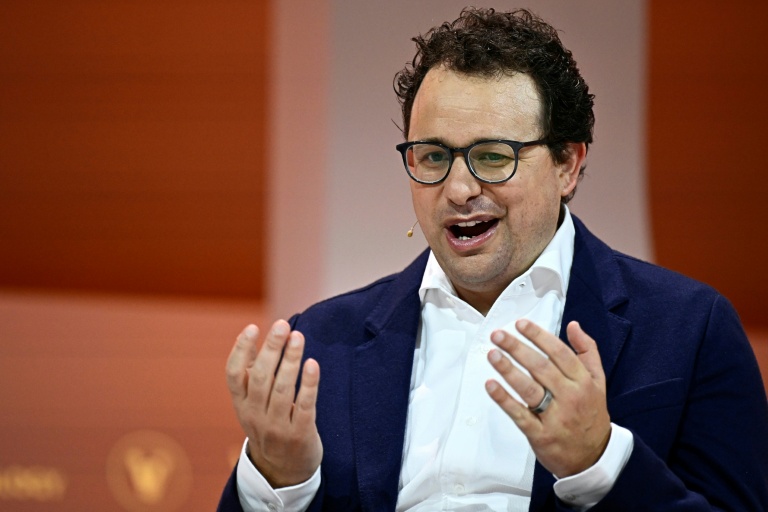Dario Amodei, the co-founder and CEO of Anthropic, previously served as a key staff member at OpenAI, the organization behind ChatGPT. Recently, Anthropic announced the launch of its latest generative artificial intelligence model, Claude Sonnet 4.5, which positions itself as the leading AI solution for computer programming.
Founded in early 2021 by former OpenAI employees who were concerned about the lack of controls surrounding the capabilities of AI models, Anthropic has quickly established itself as a formidable player in the generative AI sector. Backed by Amazon, the company has navigated a dynamic landscape that accelerated after the release of ChatGPT in November 2022. In this fast-paced environment, companies are racing to roll out new tools capable of unprecedented functionalities.
While it may not yet rival OpenAI in terms of user base and brand recognition, Anthropic has carved a niche as a top performer in AI-driven programming. The significance of this achievement cannot be understated; programming is often viewed as the domain most susceptible to disruption through AI, with substantial potential for revenue generation. Thus, the ability to excel in this area is strategically crucial.
OpenAI’s latest model, GPT-5, launched in early August and has gained attention for outperforming its predecessors in several evaluations for AI-generated programming. This leaves Anthropic with significant pressure to establish itself as a strong competitor with the release of Claude Sonnet 4.5. In a key benchmark, the new model demonstrates a profound enhancement—it can autonomously operate for up to 30 hours on a singular task, a marked improvement over its predecessor, Claude 4 Opus, which could function for only seven hours. The capability to run autonomously for extended periods allows Claude Sonnet 4.5 to consistently evaluate its own outputs, identify weaknesses, and implement corrections, setting the stage for improved efficiency and performance in programming tasks.
One of the distinguishing features of Claude Sonnet 4.5 is its performance in the SWE-Bench Verified evaluation, a benchmarking framework developed through collaboration between researchers from Princeton and Stanford. This external validation serves as a potent differentiator, lending credibility to Anthropic’s claims regarding the model’s capabilities. Additionally, the model is presented as the most advanced solution for creating AI agents capable of making real-world decisions independent of pre-existing training or specific programming rules.
Another innovative aspect of Anthropic’s latest release is its advanced application in contexts that allow AI assistants to engage with computer systems in a manner akin to human interaction. For example, the model can seamlessly execute tasks such as conducting Google searches or updating calendars based on natural language instructions. This adaptability allows for intuitive user experiences, promoting efficiency and reducing the learning curve often associated with new technologies.
Such advancements position Claude Sonnet 4.5 favorably against alternative solutions in the market, particularly those offered by OpenAI. However, the rising capabilities of AI models also beg further analysis regarding their long-term viability for small and medium-sized businesses (SMBs) and automation specialists.
When considering automation platforms like Make versus Zapier, or AI solutions such as OpenAI and Anthropic, critical factors include strengths and weaknesses in terms of performance, scalability, costs, and return on investment (ROI). For instance, Make excels in enabling users to construct complex workflows with a high degree of customization, while Zapier is favored for its ease of use and extensive integrations. Both tools have demonstrated their value for SMBs looking to enhance operational efficiency, but the right choice often hinges on a company’s specific needs and existing infrastructure.
In the case of AI, while OpenAI models like GPT-5 continue to lead in popular ratings, Anthropic’s Claude Sonnet 4.5 presents distinct advantages, particularly in programming-centric applications. The capability to perform autonomously for extended periods and adapt to varied tasks can translate into cost efficiencies over time. However, the decision to adopt a particular model should also account for the total cost of ownership, including subscription fees, implementation costs, and potential training requirements for staff to effectively leverage the technology.
Furthermore, as organizations increasingly implement AI solutions, understanding the scalability of these technologies is vitally important. The flexibility of a model to integrate with existing systems without requiring inordinate adjustments can significantly affect its adoption success and, ultimately, the return it offers.
Clear takeaways suggest that while the generative AI landscape is rapidly evolving, decisions regarding deployment must be grounded in thorough analysis. SMB leaders and automation specialists should evaluate each solution on its merits, focusing on the specific demands of their operational frameworks. Metrics such as ROI, efficiency gains, and user adaptability should dictate their choice of AI and automation platforms.
In conclusion, the latest advances in generative AI from Anthropic, particularly Claude Sonnet 4.5, demonstrate remarkable potential in specific applications, especially in programming. Since SMB leaders and automation specialists rely on technology that can adapt, scale, and deliver measurable returns, incorporating the latest AI capabilities should form part of a broader strategic initiative designed to augment human capital and operational excellence.
FlowMind AI Insight: As generative AI continues to reshape the landscape of business operations, enterprises must remain vigilant about evaluating the capabilities of emerging models. The right tool can enhance productivity and decision-making, but leaders must balance innovation with strategic understanding of their unique operational environment to maximize returns effectively.
Original article: Read here
2025-09-29 21:44:00

